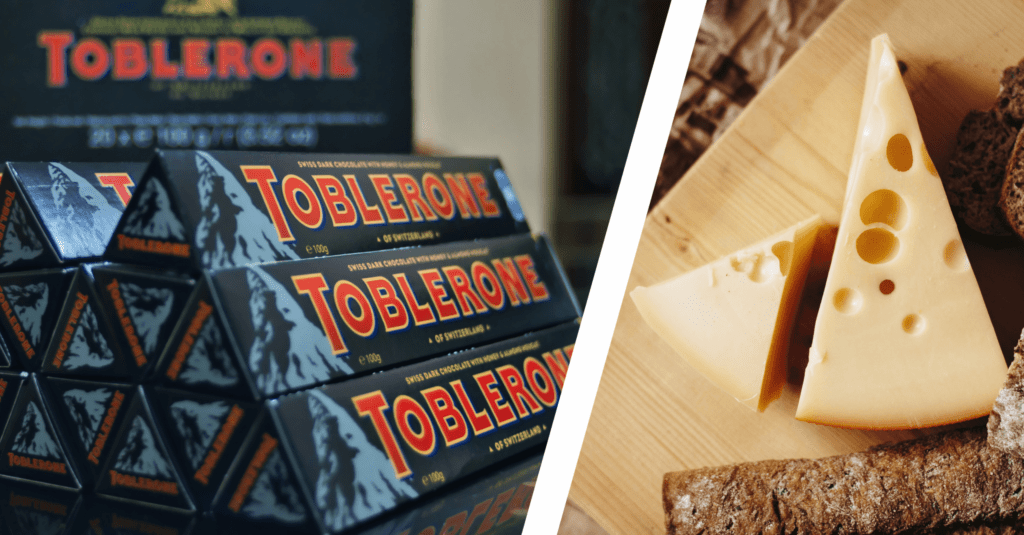“TOBLERONE” / “GRUYERE”: two cases, two outcomes for indications of source outside the European Union
[29/03/2023]

The latest news about indications of source is marked by two products so far identified as Swiss and Franco-Swiss by consumers.
The case of Toblerone packaging seen from Switzerland
The relocation of the manufacturing of Toblerone chocolate bars to Slovakia is not without consequences for Swiss trademark law.
Indeed, the federal law on the protection of trademarks, known as “Swissness”, which has been in force since 2007, establishes strict conditions of the geographical name “Switzerland” and its emblems to prevent misuse of the “Swiss mark” and consumers’ deception.
For foodstuffs, the processing stage which confers on the product its essential characteristics must take place in Switzerland.
The processed natural product must contain at least 80 % of the raw material weight from Switzerland, which is far from the usual international standard.
Mondelēz, which produces the famous chocolate bars, will change its packaging by removing the Matterhorn mountain peak and the wording “product of Switzerland” in order to comply with the Swiss legislation.
The “Gruyère” trademark case seen from the US
The difficulty of protecting designations and geographical indications abroad is a constant issue (see our article of 06/07/2021 entitled: Russia appropriates the appellation “Champagne”).
In the United States, Geographical Indication Protection is not recognised independently and there is currently no bilateral agreement with the European Union to effectively fight counterfeiting on American soil.
The regime applicable across the Atlantic is hence the collective and certification trademark law, which led the Swiss and French Gruyère interprofessional unions to file an American word certification mark “GRUYERE” on 27 September 2015 to designate cheeses from Switzerland or France.
This mark was refused by the US Office and then by the Board of Appeals, on the ground that it had become generic for American consumers, who would perceive this term as a type of cheese with small holes, regardless of where it was made.
On 3 March this year, the US Court of Appeal confirmed this assessment by concluding that, “it is clear that the term ‘Gruyère’ may have in the past referred exclusively to cheese from Switzerland and France […] however, decades of importation, production, and sale of cheese labeled GRUYERE produced outside the Gruyère region of Switzerland and France have eroded the meaning of that term and rendered it generic.
In the United States, the term “Gruyère” cannot then be reserved solely for cheeses of this type originating in France or Switzerland.
We would be happy to assist you for obtaining protection of indications of source in France and abroad.
